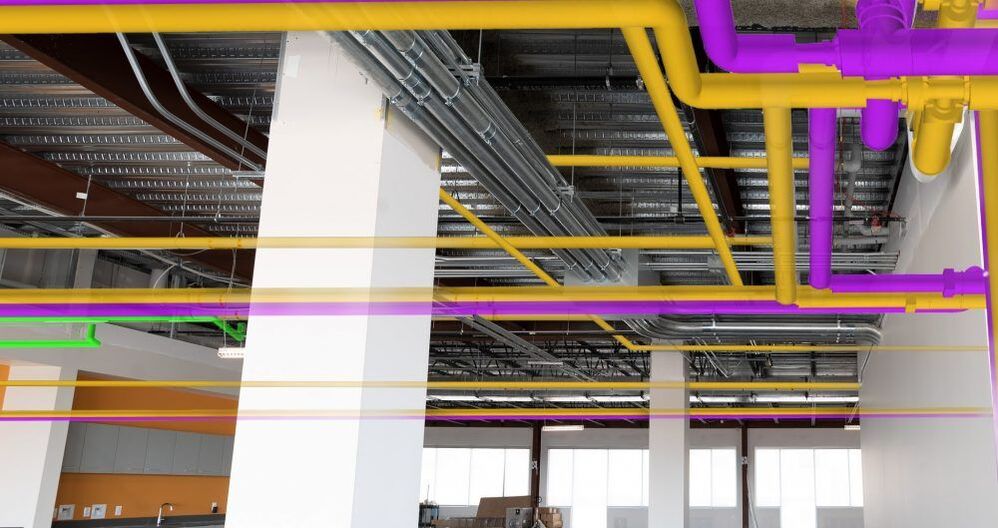|
Augmented reality is an important technology for architecture and urban planning because it is based on spatial computing, therefore it has an ability to understand 3d physical spaces, buildings, and infrastructure, and overlay these with contextually relevant information. If we fast forward a few years in wearable computing - when iOS and Android are no longer supported on mobile phones, but instead on some variation of eyewear, then we can start to really explore the usefulness of AR in our everyday experiences, and the way we design, view and create architecture, and our urban environment. As designers its important to understand the value of spatial computing, as it can not only inform the way we create physical spaces, but also the way we experience the city. 1: Travel and TourismNavigation is an obvious use case of AR - and google have already started implementing this over Google Maps AR (available on pixel 3A) which allows users to see directional overlays for better navigation around cities. However one key use-case of AR and navigation is predominantly centred on tourism, and how it can aid people in deciphering information about a city. AR has the capacity to translate, inform, and navigate people about key places of interest, and essentially improve the visitor experience without the need for tour guides and translators. 2: Commercial + RetailIndoor navigation in AR has the ability to overlay existing buildings with digital information that can help people navigate around building for improved circulation. Visual Positioning Systems can be deployed to create accurate maps and site overlays and help visitors circulate around airports, museums, and retail stores with ease. 3: Planning and Local governments The use of AR within urban settings allows inhabitants to visually understand the proposed planning changes happening around them, and essentially become more involved in the consultation stages of new projects, leading to improved transparency and communication between local governments and citizens. This vital shift in planning consultation will essentially help citizens find clearer ways to understand new developments, and to be actively involved in the regeneration stages from the very beginning. 4: ConstructionConstruction is one of the key industries that will be benefiting from augmented reality solutions. Leading innovators in this space augment site-specific information onto civil and construction sites so that workers can visualise construction data in augmented reality, helping minimise communication errors, and increase efficiency on site. Key examples of this include The Trimble XR10 with HoloLens 2, which brings mixed reality right to the front line, enabling workers in safety-controlled environments to access model data directly on site. Together with Trimble’s suite of mixed reality software and services, the device enables new field-oriented workflows to leverage 3D content in daily work tasks to improve efficiency, productivity and quality of work. 5: Culture and HeritageHow we imprint existing architecture with digital overlays, makes a radical change to the way we revitalise cultural and heritage sites. By superimposing digital information in museums and tourist attraction locations, people can gain an enhanced sense of place, and experience engaging storytelling, without the need for custom screens and projections. 6: Public ArtPublic art, in AR means that we are free from the restrictions of local authority permission. The ability to imprint art in AR in any location is really freeing for many artists. A latest example of this is AR[t] - a new art walk in the city by Apple, featuring AR Works by Leading Contemporary Artists, curated in partnership with the New Museum. Artists include Nick Cave, Nathalie Djurberg and Hans Berg, Cao Fei, John Giorno, Carsten Höller and Pipilotti Rist participate in an experiential project that is free to the public. These experiential walks take participants through San Francisco, New York, London, Paris, Hong Kong and Tokyo as they encounter works by world-renowned artists experienced via iOS. The art works connect participants to public spaces such as London’s Trafalgar Square, San Francisco’s Yerba Buena Gardens or New York’s Grand Army Plaza in Central Park. If you are interested in how AR can be used in your industry, contact us for a consultation below.
0 Comments
Your comment will be posted after it is approved.
Leave a Reply. |
Darf BlogWelcome to Darf Blog. Categories
All
Archives
March 2024
|
Want more Information?
Our TeamAbout
|
HelpTutorials
|
LegalTerms of Use
|
All works © Darf Design 2020
Please do not reproduce without the expressed written consent of Darf Design
Please do not reproduce without the expressed written consent of Darf Design








 RSS Feed
RSS Feed
